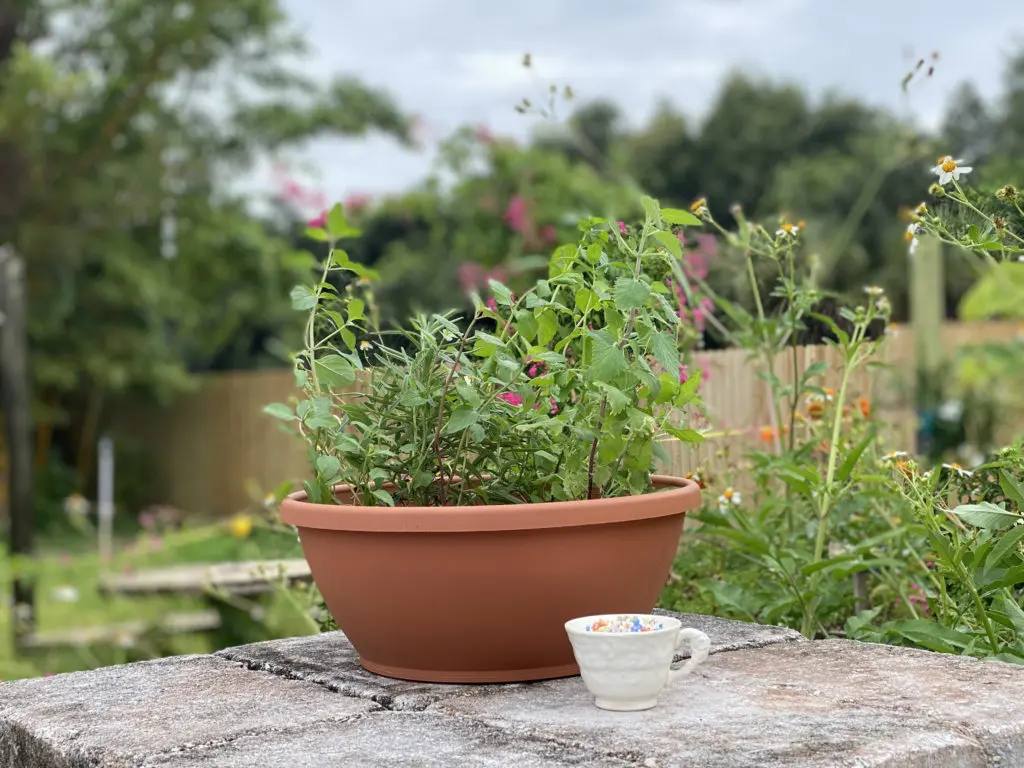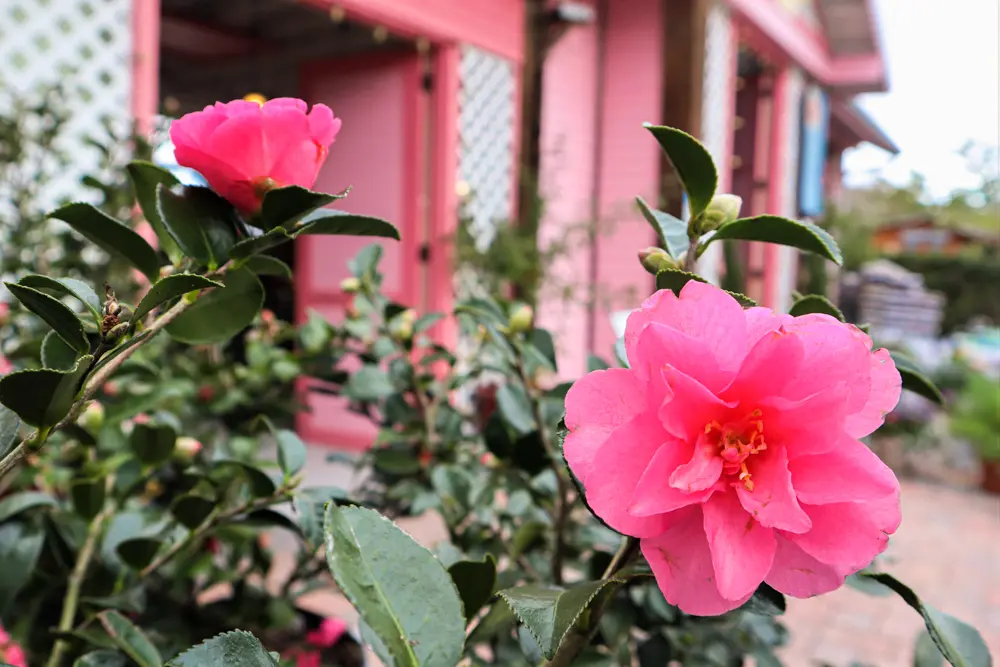by Amanda Rose Newton
Tea is perhaps the oldest beverage on the face of the Earth. It is consumed hot in the winter time, used to soothe sore throats, and is crafted into the sugary delight that is Southern Sweet Iced tea.

However you take it, the comfortable familiarity of tea is on par with the numerous health and wellness attributes it possesses.
Tea is also mysterious, embedded in ceremonies and traditions going back to the beginning of our species. Many varieties are only able to grow in strict climates and elevations.
While traditional tea comes from the tea plant, most herbs can make for a steamy cup of goodness– many of which you may already have growing in your garden.
If you struggle to use your herbs before they go to seed or flower, consider tossing them in with your cup of traditional tea, or create your own tisane (herbal infusion) using the basic recipe provided for each below.
Herbs have so many qualities that aid in our overall health and mental well-being, and homemade tisanes are an excellent way to get in your daily dose of goodness.
The Healing Power of Herbs
While just about any herb adds flavor to brewed beverages, some herbs just pack more of an antioxidant punch in terms of health benefits. They happen to be some of the easiest plants to grow, making them perfect for new gardening pioneers.
Chamomile (Matricaria chamomilla)
Even the name sounds relaxing! This herb is well-known for its calming capabilities and makes it a perfect winding down before bedtime drink.
A member of the aster family, it features delicate, white daisy-like flowers that have a mild-floral scent. German chamomile is what is traditionally grown here, and it will struggle in temperatures above 98 degrees, making autumn the perfect time to plant it.
It is harvested once several of the flowers have opened up and can easily be dried by tying a bunch together and hanging upside down for a few days.
How To Brew Chamomile
Steep 2 to 3 teaspoons of the dried flower heads in 1 cup of boiling water for 5 to 10 minutes. Stir in a sweetener of choice and get ready to board the train to the land of sweet dreams.
Mint (Mentha sp.)
Impossible to kill and a bit of a showboat, mint is big on flavor and larger than life in a garden bed. For this garden member, it is best to keep it contained in a planter by itself or with other flavored mints such as pineapple or chocolate.

Research shows the scent of mint is calming, relaxing, and reduces anxiety for many. It’s a great choice for pre-midterm exams or before that big presentation! It’s also especially soothing for sore throats and stuffy noses.
Mint leaves should be picked often and they can be dried if you wish; however, most would argue that mint is at its best when prepared fresh.
How to brew mint
Use fresh leaves and tear them up into large pieces. Steep in boiling water for about 7 minutes, maybe a few minutes less if you prefer a not-as-strong cup.
Lemon Balm (Melissa officinalis)
The citrusy scent makes everything feel clean and fresh which, on its own, can put the mind to rest. It also helps relieve headaches and a few studies showed it can reduce blood pressure for some.
Easy to grow, it is also a bit of a spreader. Keep this one in a container if you can. They prefer rich, drained soil and full sun, so be sure to plant them with herb counterparts who enjoy the same. The leaves are at their peak right after harvest and are especially delicious in sun-brewed ice tisane.
How to brew lemon balm
Steep leaves in boiling water for 2 to 5 minutes. If you would like to attempt sun-brewed tisane, mix with other herbs of choice in a glass jar with 2 quarts of water and place in the sun for 6-12 hours.
Hibiscus
Here in Florida, we are lucky to have this favored tisane ingredient all over our tropical landscape.
Just like chamomile, the flower is what is brewed here, not the leaves. A member of the cotton family, this group is notorious for relieving stomach aches and body pains. It also happens to have a hefty dose of vitamin C, making it a valuable player in your daily immune-boosting ritual.
Hibiscus tea also happens to be easy on the eye, often taking on the color of the bloom. The most common hibiscus used for tisanes are Hibiscus sabdariffa or Hibiscus acetosella, so be sure to use the right one in your brew. You can also purchase hibiscus meant for tea at several local shops, including our friend and neighbor, Mrs. Mango.
How to brew Hibiscus tea
Steep flowers in boiling water for 2 to 5 minutes. Also delicious iced!
Camellia Sinensis
Camellia has the nickname “tea plant” for a reason! The leaves of camellia contain caffeine, making it a great choice for a morning brew.

All tea originated with the Camellia and the variance in flavoring is due to how the leaves are processed.
To process, collect using sharp sheer and snip leaves from the plant. Allow the leaves to air dry on a flat cookie sheet until no longer soft. Once dry, roll leaves until they are wrinkled, which will release the flavors and antioxidants. Since processing is, well, a process, go ahead and do a bunch at once and dry the rest for later use.
How to brew Camellia tea
For white tea: This is from less-processed, fresh leaves.
For green tea: This can be consumed the same day it is harvested, just let the leaves air dry for about 8 hours. Gently toast the leaves in a pan over low heat and then roll the leaves to release volatiles. Brew and enjoy!
Oolong: Leaves must wilt for several days. Then, they are dried similar to green tea with the addition of shaking the leaves constantly for at least 30 minutes before rolling.
Black tea: The strongest of the bunch, this requires significant rolling at a higher pressure. You are doing it right if you see liquid ooze out of the leaves. The leaves are then stored until they change to a brown-black.
An Alternative to Sweet Tea: Stevia (Stevia rebaudiana)
Stevia is popular enough as a sweetener to be featured alongside the usual white, yellow, and pink packages on restaurant tables. It grows well here in Florida with an affinity for afternoon shade.
To Brew: Grab a few fresh sprigs and steep in boiling water until your strength preference is met.
Gifting a Garden of Health
Tea container gardens make excellent themed gifts, perfect for a party hostess/host or birthdays. Choose a well-draining 12’ container and choose 3 to 4 different herbs to grow.
Be sure to pick herbs that get along well with others!
Water requirements vary, so keep those that like “wet feet” or dry, sandy soil together.
Remember, you can always plan your gardening projects ahead of time by checking out our online inventory or ask for pairing suggestions from our friendly staff who, much like tea, will help alleviate stress and anxiety.


